I wrapped up a new client kitchen project a couple of weeks ago, but also wanted to talk some more about products that I’ve been learning about and using as I continue to grow my business, as well as my skills and techniques. I’m always looking into and trying new primers, fillers, etc… but have stayed true to my trusty standby as far as paint goes – Benjamin Moore’s Advance.
In doing some reading and research, I’ve discovered that Breakthrough by PPG has gotten great reviews as a product for painting cabinets, and I’ve been working with it and using it (and loving it). I thought it would be helpful to do a side by side comparison of the two products. They’re both awesome, but they each have pros and cons to consider, and it’s worth taking a closer look.

Benjamin Moore Advance – Pros
Like I said, I’ve been using Benjamin Moore’s Advance for years now, and have been a loyal customer. There are lots of reasons why I love it and have used it for as long as I have. Let’s do a bulleted list, as I like to see things all organized. 😉
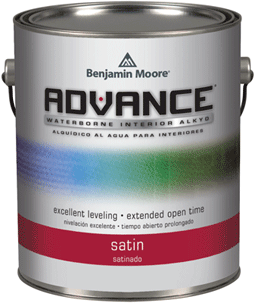
- Advance is a waterborne alkyd, that hardens like an oil. This means soap and water clean up, which I love. I know there is a time and a place for solvent-based products, but I really hate working with solvents. They’re smelly, messy, and the clean-up is awful. So this product is the best of both worlds, in my opinion – great durability without the hassle of dealing with smelly solvents.
- Advance levels out beautifully, whether you spray it or brush and roll it.
- I use Advance in a satin finish, and it is perfection. Just the right amount of shine to it, without being glossy.
- No topcoat required.
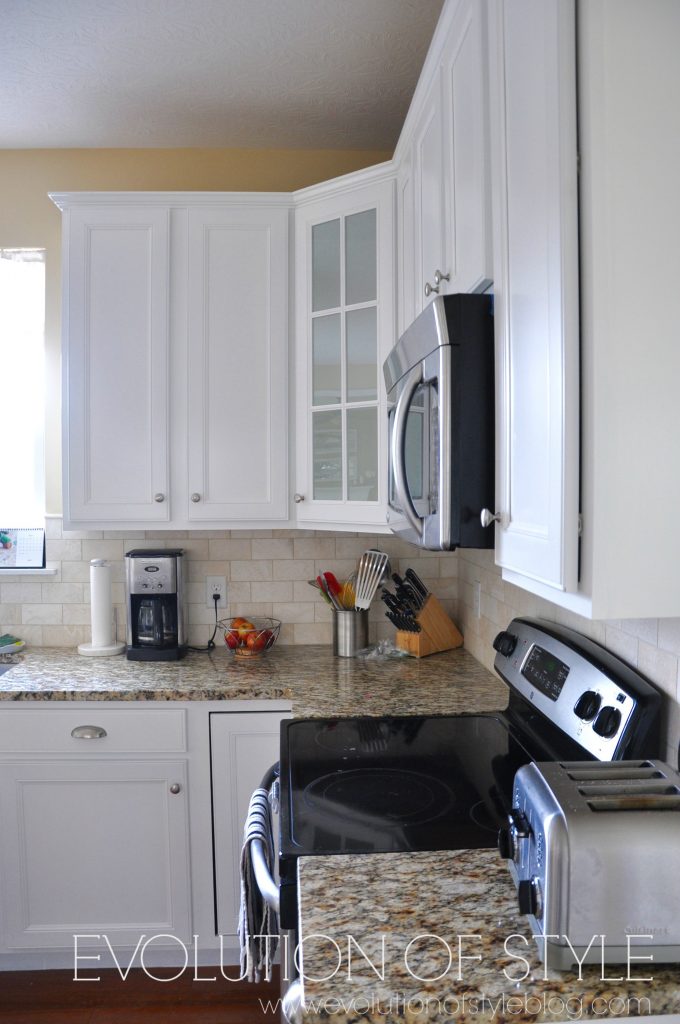
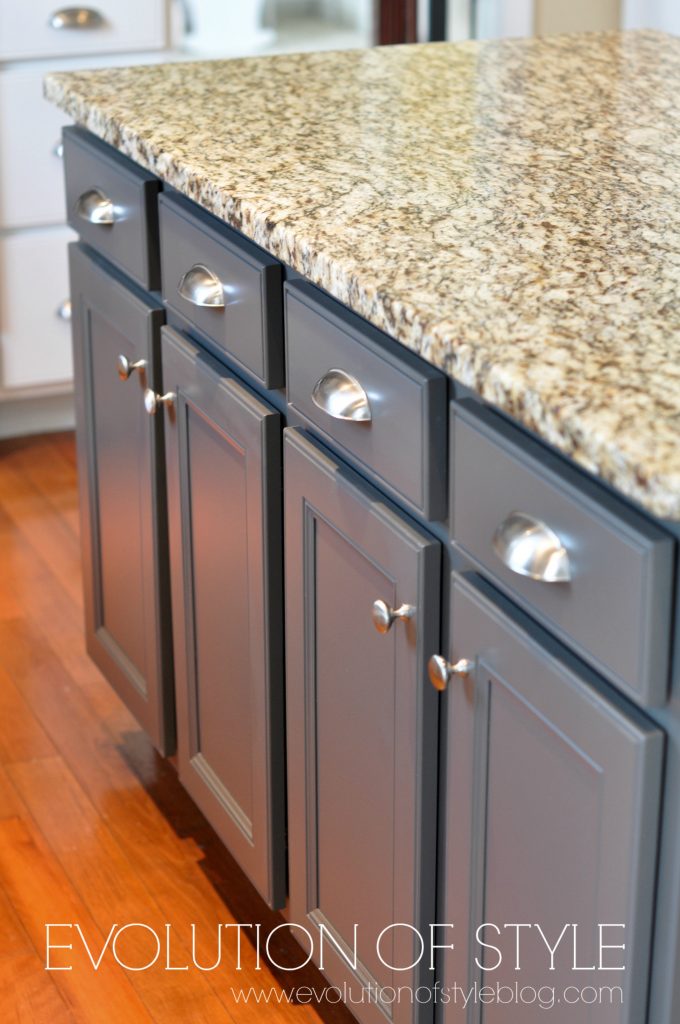
Benjamin Moore Advance – Cons
- The biggest con for me when it comes to the Advance, is the dry time. It’s a 16 hour recoat time, which means you spend a lot of time waiting for paint to dry. When you’re painting cabinet doors with two coats of primer and two coats of paint – on both sides – that’s a lot of waiting for paint to dry, and it drags out the production process.
- It takes 30 days for Advance to fully cure. That’s not to say that you have to wait that long to touch your cabinet doors, or rehang them. But you need to be a little gentle until the paint fully cures. With dark colors, the dry/cure time seems to be longer.
- While Advance levels out well, you have to be mindful and not mess with it if you’re brushing and rolling it. If you goof up, leave it alone. The more you mess with it, the worse it gets. And oftentimes, the mistakes level out to where you hardly even notice them.
PPG Breakthrough – Pros
Granted, I’m a newer user of PPG Breakthrough, but I’ve been doing loads of research and reading, and have also talked with other painters and the PPG reps about this product. But really, products speak for themselves, don’t they?
- Breakthrough is a waterborne acrylic, so you still get the easy clean-up like you do with Advance.
- Dry time – this one is a big one for me. It’s dry to the touch in 15-20 minutes, and you can recoat in two hours. That’s just amazing, and for me, it cuts down on my production time in a big way. And, it reduces the time that I need to be on-site when painting cabinet frames, which is great too.
- Durability – it’s hard as nails, and you can handle/move the doors soon after painting them without having to worry about the paint still being tacky. Another bonus – especially when you’re transporting the doors to install them. Speaking of durability, my local PPG store has a laminate counter painted in Breakthrough. Hard as nails I tell you.
- No topcoat required.
PPG Breakthrough – Cons
- Not everyone sees this as a con, but the satin finish in Breakthrough is a bit more matte than that of the Advance. I personally prefer the satin finish of the Advance, but I know people who prefer the Breakthrough. And honestly, it’s not that noticeable, I just notice it because I work with it often.
- Leveling – Since Breakthrough dries so fast, it doesn’t level out as well as the Advance – but this is only when I’m brushing/rolling the frames – it sprays just fine. However, if you use the right painting tools, you can still achieve a beautiful finished look. One must have tool is a flocked foam roller. I experimented with quite a few, and this roller gave the smoothest finish when I hand painted the frames. Trust me on this one. Use the flocked foam roller. Here is an end panel that I painted in the Breakthrough:
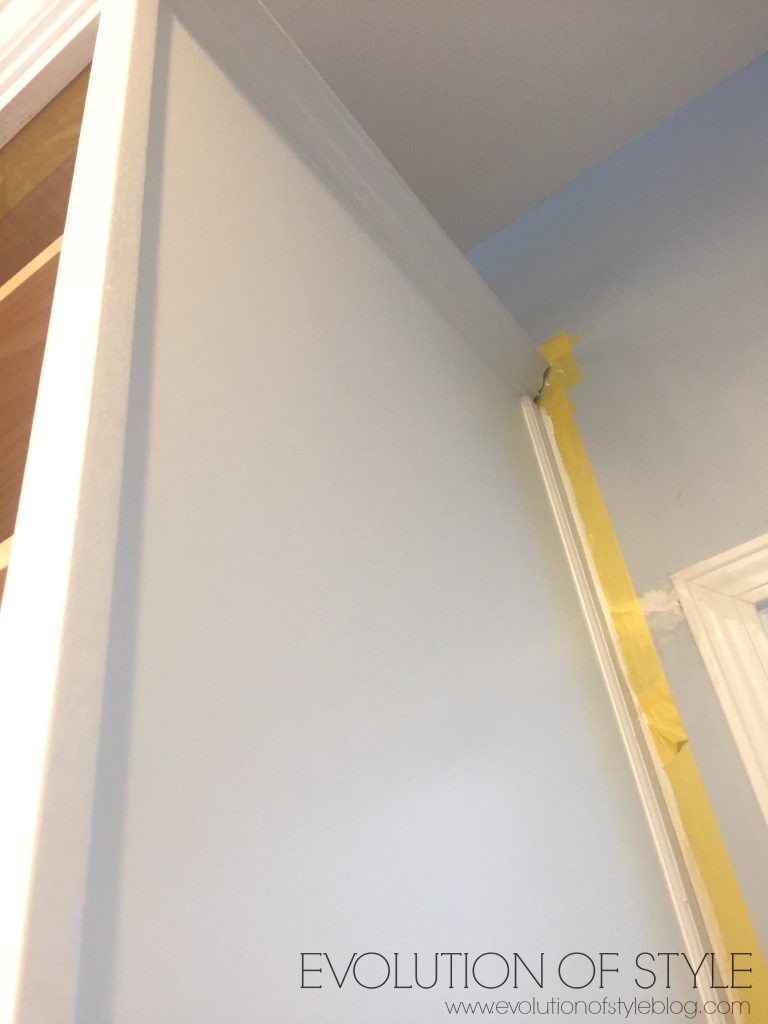
- Breakthrough is a thinner consistency and doesn’t cover quite as well as the Advance, so you’ll use more paint as a result. There have been times where I’ve had to buy another gallon of paint to finish a job, whereas with the Advance, I could have finished it with one gallon. Not a deal-breaker, but something to take into consideration.
- Important: Make sure you use the Breakthrough that is VOC250 vs. the VOC50. There have been issues with the 50, and the higher VOC version of Breakthrough will hold up better. If you can’t get the VOC250 in your area, go with the Advance.
But as you can see, the end result is gorgeous.
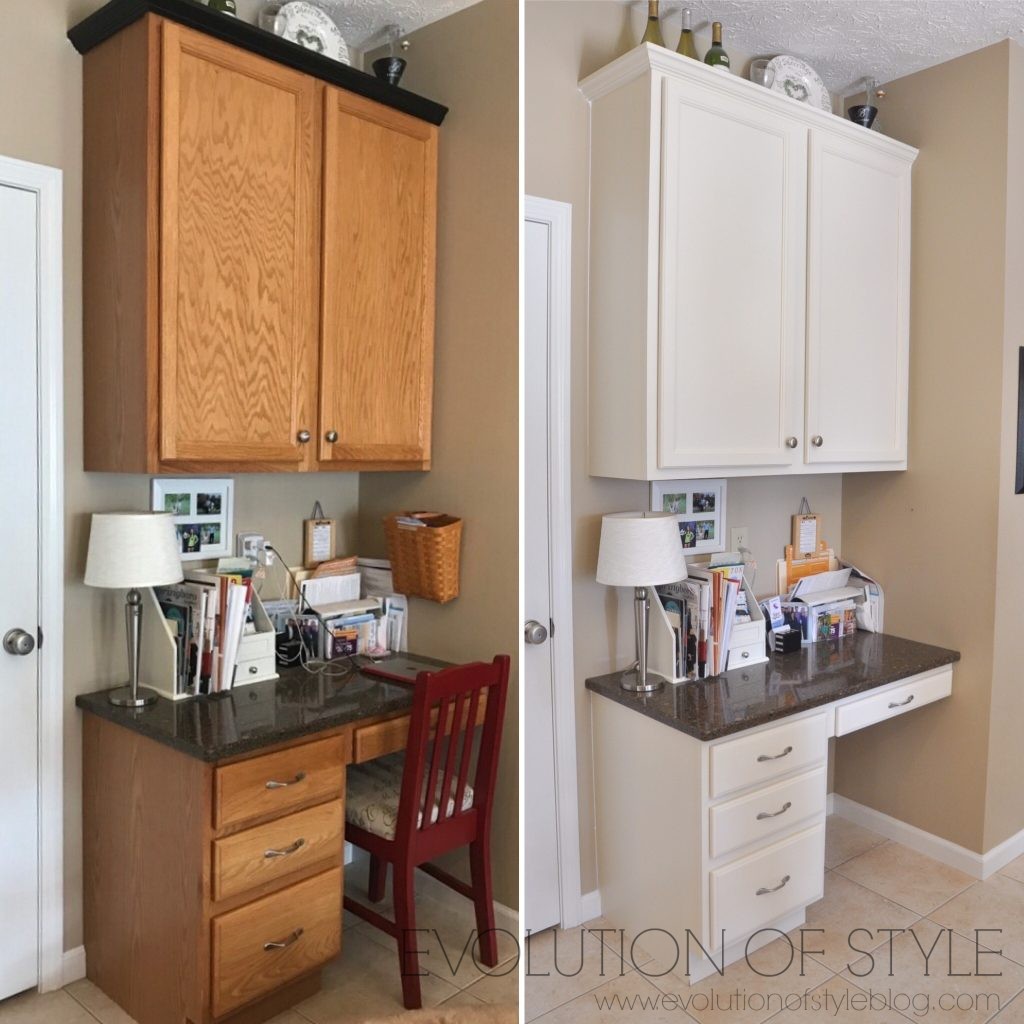
So there you go – a comparison of two great products, each with its own merits. I like both of them for different reasons, and I think you’ll be happy with either one. It’s a matter of personal preference, and what matters most to you.
If you’re looking to paint your cabinets, check out my tutorials: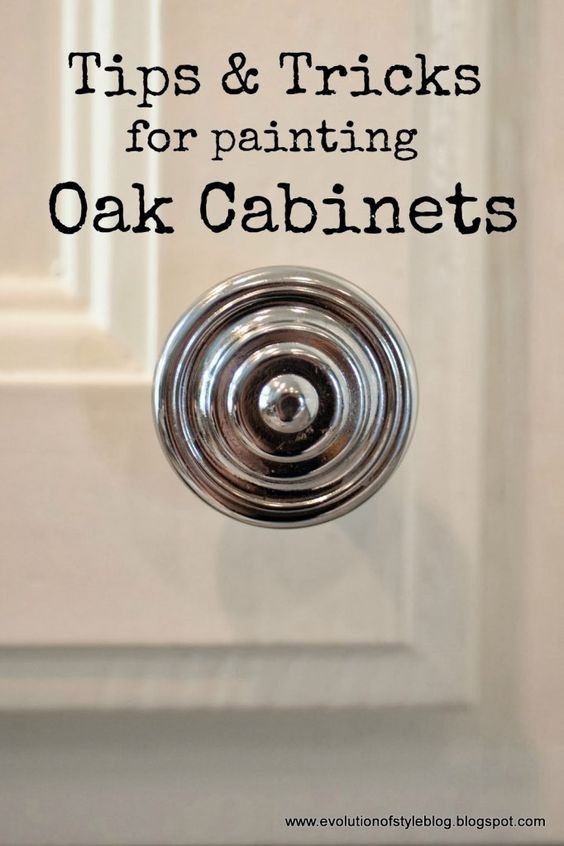
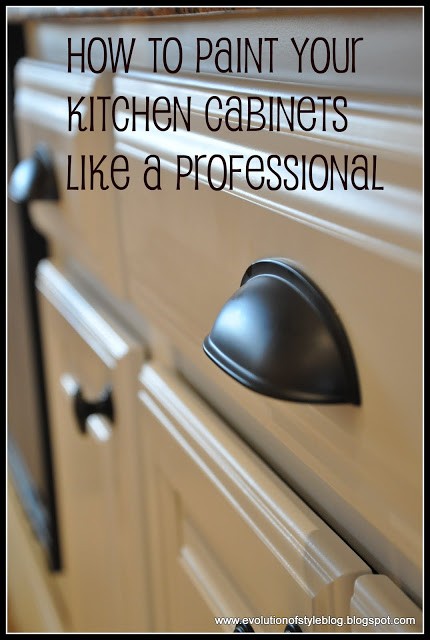
Do you have your favorite go-to products?
Jenny



151 Comments
Megan
June 27, 2017 at 9:34 amI love these posts! I have used BM Aura and I love it, but I have another project that I am going to try the Advance. Now I need to add PPG Breakthrough to my list. You’re right about BM’s satin, it has the perfect amount of sheen.
Jenny
June 28, 2017 at 1:53 pmTheir satin is just perfection!
cheryl robinson
July 2, 2018 at 3:12 pmI used the PPG Breakthrough to paint my sons oak kitchen cabinets. It is awesome! Only needed 2 coats and it dries hard, and virtually streak free. It doesn’t seem that thick when you paint with it, but it doesn’t run like latex paints. I bought a gallon, but only used 20 percent of it.
I have painted several kitchens, and will only use this paint from now on! Saves time by not having to paint 3-4 coats. Love it!
Lauren@SimplyLKJ
June 27, 2017 at 9:56 amThanks for the comparison Jenny. I too love Advance, but had not heard about breakthrough. The drying time is what gets me with Advance, especially with our humidity here.
Sarah
June 27, 2017 at 11:53 amAwesome comparison! This is so helpful and totally perfect timing…I’m thinking of painting my cabinets this summer and the guys at my local BM store were just telling me about the Advance line. Thanks for the warning about the long dry time, didn’t realize that. My cabinets are already white…do you think I need to still do 2 coats of primer or would 1 be enough? Also, do I sand first? Thanks so much!!
Jenny
June 28, 2017 at 1:53 pmThe dry time is definitely something you have to be mindful of, but even with the 30 day cure time, it’s not like you can’t touch them – just be a little careful. I usually do two coats of primer on oak cabinets because they’re so grainy, but if you have a maple or cherry wood, you might be able to get away with one coat. See how well it covers, and judge from there. I always clean and sand before priming/painting, and give a light sand in between coats for a smooth finish. 🙂
Kathy in Kansas
June 27, 2017 at 1:38 pmCan either of these be used to paint furniture? I’m painting the base of an Oak table (currently stained ugly color) and want to use a durable paint that will flow easily around the curves of the base without running. Also, what primer do you recommend/use under either of these paints? I really enjoy your blog and your paint tips, etc. Keep of the great work!
Jenny
June 28, 2017 at 1:51 pmThey could definitely be used on furniture. My only caution with the Advance is again, the cure time. I use a variety of primers – I like PPG’s SealGrip, Sherwin Williams Problock primer or Coverstain is good too, and BIN Shellac is another option.
Cathy B.
June 27, 2017 at 1:48 pmThis is so great. I’m trying to get up the nerve to paint my cabinets. Since you mentioned Breakthrough painted on a laminate counter top, if I used it on a bathroom counter top (after the proper prepping), what type of top coat/poly would I need, if any?
Thanks!
Jenny
June 28, 2017 at 1:50 pmWhen I paint cabinets with the Breakthrough, I don’t use a topcoat. I don’t think they top coated the one in the store either. Crazy good stuff.
Bob
February 28, 2018 at 11:55 pmBreak-Through is one of the only coatings that will adhere to almost any substrate, including leather & glass. Extremely flexibly when fully cured (5-7 Days in optimal conditions). However, it is not intended for use in areas that may produce “ponding” or extended periods of water resting on the surface. “Ponding” will cause the product to lift or bubble if not applied correctly.
Kim
June 27, 2017 at 3:51 pmDo you have any recommendations for painting unfinished oak laundry cabinets from Lowes? They are just the off the shelf cabinets you can buy, so oak doors and oak veneer I assume on the frame. I’ve considered both painting and staining in a fun color. I’m hoping to do a blue finish of some kind. I’m not a huge fan of seeing the grain through the wood for these cabinets, but staining just might be lots easier. Any thoughts or suggestions? Thanks for the comparison for these 2 paints, though!
Jenny
July 5, 2017 at 4:06 pmUnfinished wood requires more attention for painting just because of the nature of unfinished wood. More sanding involved in my experience, and you’ll want to use an oil based primer as it helps with issues of raising the grain once applied. Staining might be an easier route!
Kayla
June 27, 2017 at 5:25 pmLove this post:)
Peggy
June 28, 2017 at 2:46 pmBreakthrough sounds similar to Valspar’s Cabinet Enamel. Same quick dry time. Very hard finish and not-too-glossy finish. I bought it to use on kitchen cabinets but haven’t started that project yet. I thought I’d give it a try on my stairs and it’s been great! Easy to use. Wears really well.
Jenny
June 30, 2017 at 11:51 amI will have to check that one out, Peggy! I’m always on the lookout for new products, and love to hear about ones that people have used and liked. Thanks for the recommendation!
jill
June 30, 2017 at 1:36 amHope this isn’t a silly question, but is “PPG” Pittsburgh Paints? How do the costs compare?
I was all set to use BM on my cabinets but now you’ve added a wrinkle!
Jenny
July 5, 2017 at 9:20 pmI think they’re all co-mingled somehow. I can’t quite figure it all out! Honestly, as a homeowner, Advance is probably the easiest to work with, as the Breakthrough takes a little more finesse to get a smooth finish. But they’re both great products!
jill
July 8, 2017 at 5:35 pmThanks Jenny. I think you are right, as a homeowner only painting cabinets once every so often, I think i should go with the Advance. I love the finish and dry time won’t be as much of an issue as it would be for somebody doing it as a business.
connie
July 2, 2017 at 2:16 pmThank you for this post! I am getting ready to paint my cabinets so it is quite timely. Is it possible to paint the cabinet doors without removing them? I did this once before in a former house, and it was difficult to rehang the doors –they were old cabinets and did not take kindly to the process.
Jenny
July 5, 2017 at 4:04 pmI never paint the doors in place because it is harder to get a drip-free finish. Since I spray the doors, I like having them on a horizontal surface for spraying and drying them. Just make sure you keep track of the hinges that correspond to the doors for the best result in rehanging them.
Lyn
April 13, 2018 at 2:13 pmDoes it come in a spray can or do use your own sprayer ?
Jenny
April 14, 2018 at 7:12 amMy own sprayer – no spray cans for these.
Teresa P
July 5, 2017 at 6:16 pmDo you have any recommendations for painting over melamine cabinets. My cabinets are melamine boxes (like plastic) but the doors are maple. Also do you typically paint the insides of the cabinets are do you leave them blank. Thanks! Love all of your projects.
Jenny
July 5, 2017 at 9:22 pmI think you’re ok to paint the boxes, with the maple doors. Just make sure you use a good primer for the frames – Stix, maybe, or an oil based primer to make sure you have good adhesion.
Becky
July 11, 2017 at 10:26 amIs there much difference in price between the Advance and the Breakthrough?
Jenny
July 11, 2017 at 10:16 pmI get a discounted rate as a paint contractor – with that said, the price is very comparable between the two.
Amin
July 23, 2017 at 4:38 pmHi Jenny! Thanks for the informative post! One question: Have you used Muralo Ultraborne Semi Enamel? I have been reading and some painters rave about it’s leveling properties and hardness.
Wanted to get your opinion on it.
Thanks.
Jenny
July 23, 2017 at 8:08 pmNo personal experience with that paint.
Jackie
August 23, 2017 at 6:29 pmHave you used either of these paint/prime bare maple wood? With maple having a tight grain paints don’t always adhere without proper prepping. Most recommend prepping with turnpentine and linseed oil and painting with an oil based enamel. Would you recommend one of these paints?
Jenny
August 24, 2017 at 10:35 pmWith bare wood, I would definitely go with an oil based primer (or even a shellac) to prime it so that you don’t raise the grain. From there, you can go with whatever you’d like for a top coat. I have found some great waterborne products that I’m really happy with.
Jen
August 23, 2017 at 7:56 pmHey Jenny. Is it okay to put a little glaze overtop of the BM Advance once it had dried/cured a little. I have a brown glaze that I want to put in the crevices of the cabinets. Would I have to put on a topcoat or are glazes usually okay once cured? Also, does the BM Advance ever yellow over time with the lighter colors?
Jenny
August 24, 2017 at 10:33 pmI have never done a glaze over the Advance, but I think if you did, you would probably have to put a top coat of some sort on it. Let me do some checking and see what I can find out. As for yellowing, I haven’t had an issue with it – although I’m wondering if adding a poly topcoat might cause that to happen.
Megan Walsh
October 8, 2017 at 2:35 pmLove your style….Thanks to my sister, Kate Darcy, for pointing me into your direction.
Jenny
October 8, 2017 at 7:17 pmThank you Megan! It’s so nice to keep up with Kate on Facebook – wish she was closer!
Manny
December 7, 2017 at 7:54 amI plan to also use breakthrough for my future plans on painting or kitchen cabinets. What type of sprayer did you use for the breakthrough paint?
Jenny
December 7, 2017 at 8:01 amI have a Titan Capspray 95 HVLP system, but when I first started, I had a Wagner HVLP conversion gun that I used with my air compressor, and it worked great! Since I’m doing jobs for customers, I needed to upgrade. 🙂
Kathyski
December 31, 2017 at 5:55 pmMore of a question. Between the two kitchen cabinet paints; Benjamin Moore and PPG, which really holds up and doesn’t chip on cabinets? I am going to attempt all by myself painting oak cabinets. I searched for the best paint and came across your blog.
Jenny
January 1, 2018 at 4:35 pmWith either one of these paints, the key to having a good long-term outcome is in the prep. Make sure you clean and sand before priming (I have started using BIN as a primer for almost all of my kitchen jobs). I have moved to PPG Breakthrough for the most part, mainly because of the cure time and the recoat time. The drying time (16 hours in between coats) is a tough one when you’re working on kitchens for customers, and PPG allows me to feel good about my finished product, but not have to sit around waiting for paint to dry. 🙂
Alan Crider
January 4, 2018 at 11:54 amOn tight-grained, wood-finished cabinets, do you prefer and oil-based primer or acrylic? I like the Seal-Grip line of primers and they make both oil-based and acrylic.
Alan Crider
January 4, 2018 at 11:58 amAnd with the longer recoat time, does the Ben Moore product give a longer “wet edge” than Break-through? Break-through gets “snotty” really quick. And with typical drying conditions (70 degrees/50% less humidity), when is the Ben Moore product “dry to touch”?
Jenny
January 4, 2018 at 3:26 pmBen Moore does give the product a longer “wet edge”, but there is also a point where if you keep fiddling with it, it will make a bigger mess. If you get to that point, just leave it alone, come back to it when it’s dry and sand it down and start again. Ben Moore is dry to the touch within an hour or two, but the recoat time is 16 hours.
Jenny
January 4, 2018 at 3:28 pmI have been moving to BIN shellac as primer for just about all of my jobs lately. It dries super-fast and is a great base primer for just about any surface that I come across these days.
Bob
March 1, 2018 at 12:00 amRustoleum Smart Prime
Anne
January 11, 2018 at 8:56 amI have dark brown 1970 fake laminate kitchen cabnets. What primer, paint and roller do you suggest? I can’t rplace as this is a rental, the landlord is fine with me painting them.
Thank you,
Anne
Jenny
January 11, 2018 at 9:49 pmIf you’re painting laminate, I would go with a primer like Stix – it lives up to its name and sticks to everything. I’m still a big fan of Benjamin Moore Advance and PPG Breakthrough as a paint option.
Anne
January 16, 2018 at 9:28 amThanks so much Jenny!
Anne😀
Adrienne
January 24, 2018 at 8:33 pmI’m having a painter paint my kitchen cabinets. He told me the paint he is using on the boxes has built in primer and he has only put (2) coats of paint, so far. He left the can of paint at my house after the 2nd coat and I started reading the can directions…it happens to be PPG BreakThrough. I read on the can that he should have used a primer. Should I be worried that he didn’t use a primer?
My cabinets are oak and were factory stained a “honey oak” color…new in 1996. The painter lightly scuffed before coating the boxes. The doors are off site getting spray painted. I was told they are receiving a prime coat and as many topcoats that are needed to cover…. He is using a lacquer paint to spray them. What are your thoughts?
Jenny
January 24, 2018 at 9:10 pmA couple of things jump out at me here. 1) While Breakthrough has great bonding qualities, it’s also very thin and would take A LOT of coats to cover oak frames. I always prime my cabinet boxes (usually two coats) and then do two coats of Breakthrough. I can’t imagine that the coverage would be enough so that the wood wouldn’t show through if you used Breakthrough without a primer. Oak tannins have a tendency to bleed through, which is why a stain blocking primer coat is especially important. 2) Why is he using lacquer on the doors? Why not Breakthrough also? And, if he’s priming the doors (even if he used Breakthrough on them), I would be concerned that the doors wouldn’t match the frames. That said, I would be concerned that finished look of the lacquered doors would not be the same as the finished look on the frames, both in sheen and in color for that matter. I think your concerns are definitely valid, and I would pose these questions to your painter.
instagram.com/fauxutah
February 2, 2018 at 10:29 pmthanks for the review on the PPG paint i been thinking of try it and now that i read your review i feel better about it
Shona
February 4, 2018 at 11:05 amThanks for the info! I’ve been spraying BM Advance for 2 years with a small HVLP sprayer… which I thin with an extender. I’ve only just recently heard of Breakthrough and I’m dying to try it. What kind of sprayer do you use? Do you thin it? If so, with what? If it dries so quickly, does it dry in your gun if you don’t clean it out right away?
Jenny
February 4, 2018 at 10:42 pmI have an HVLP turbine setup now that I’m doing cabinets as a business, but I started with a less expensive HVLP gun that connected to an air compressor. I usually thin the Breakthrough a little bit, but not much. Luckily it doesn’t dry so fast that my gun dries up. It’s a great product!
Valerie M Nicholas
July 23, 2023 at 3:19 pmWhen using advance by BM , what top coat for already stained and cerused oak cabinets and how much do you dilute with in sprayer? And what do you dilute with ?, would you spray boxes too? I was thinking rolling my boxes and spraying my doors same amount if primer (2 coats) and same amount of BM advance coats.
Jenny
August 10, 2023 at 1:03 pmBen Moore Advance does not require a clear top coat. For diluting, I recommend using a bit of water, but generally, you don’t need much – depends on your sprayer and how it is able to push through the paint. Most of the time, I hand paint the frames (primer and paint), and then spray the doors.
John
February 5, 2018 at 9:16 pmLove your information Jenny. I have also used BM Advance and PPG Breakthrough for kitchen cupboards as well as for an oak two piece dining room hutch. I use STIX primer on synthetic surfaces and almost always Zinsser Cover Stain Primer to block tannin bleed-through. Recently I painted the hutch with a mixture (well shaken) of 1 litre Flat and 1 litre Satin (Pearl) resulting in a closer sheen, in off black color, to a satin Breakthrough. Love how it turned out. It has only been 4 days but when I run my hand along the surface of this black hutch or handle the face of the door to re-hang, there appears a sort of smudge mark or dulled look to the finish. It just has me questioning the longevity of the Advance. From your experience is this really an issue of curing. I have not had enough experience seeing the difference between ‘dried’ paint versus ‘cured’ paint of the same product. The lady at the paint store first recommended the Flat sheen to better resemble milk paint cottage looking furniture. However, in the future, I would never go less than Satin sheen. I don’t mind the lengthy cure time, IF I am sure it will result in me being able to handle the hutch and do a ‘finger nail drag’ test with confidence after 45 – 60 days. Your thoughts and comments would be appreciated.
Jenny
February 6, 2018 at 7:58 amJohn – I suspect the issue you’re having is related to the cure time. I’ve also found that dark colors seem to take even longer to cure, so that may be part of the issue as well. Another reason that I love the Breakthrough so much – it dries/cures so much faster!
Joey
February 24, 2018 at 7:36 pmWhat primer are you using underneath the advance and breakthrough
Jenny
February 25, 2018 at 9:31 pmI have moved to using BIN shellac on just about everything these days.
Ken
February 28, 2018 at 1:03 pmMy friend is an interior painter by trade, and he helped me spray my kitchen chairs with an air-assisted airless sprayer, we used 2 coats of Bin advanced Primer, and 3 coats of Breakthrough V51, and within 6 months the areas on the tops of the chairs where you would grab turned “soft and gummy”, but not on the primer. Have you noticed that issue on any of your cabinets? since it only went to the primer it leads me to believe that their is something wrong with the paint. We let them cure for a week before we started using them. any tips?
Jenny
February 28, 2018 at 9:17 pmI’ve never had any issues like this with the Breakthrough. How much dry time did you allow in between coats? While I don’t top coat my cabinets, I do usually use a clear coat on furniture. Not sure if that would have prevented this from happening or not, but it’s something to consider.
ken
March 9, 2018 at 5:47 pmwe gave it about an hour between coats
Don
March 26, 2018 at 7:50 amHi I was curious what kind of spray gun you use.
I have tried rolling various paints on furniture and cabinets myself as a do it yourself-er and the brush strokes are to noticeable
Jenny
March 26, 2018 at 11:32 pmI have a few spray guns, but primarily use a Titan Capspray 95 HVLP system. However, I started with an HVLP conversion gun that connected to my air compressor and had great results!
l
June 7, 2018 at 9:54 pmHigh volume low pressure (HVLP) spray gun is the way to go. Even with a self-leveling paint like Advance, brush strokes–or orange peel from air froth when using some foam rollers–are often visible. They’re pricey. But consider dipping into your “sweat equity” and purchase a gun along with three or four extra paint containers and three or four different paint tips (and o-ring kits, and an extra take up hose… and… and…). Point is, you’ll only achieve a commercial-quality flat surface with an airless (technically “not airless”) sprayer.
Colleen
March 27, 2018 at 8:33 pmwhich of the two products that you have used would you recommend for painting a pine hardwood floor?
Jenny
March 28, 2018 at 6:27 amI would look at paint products specifically designed for floors.
Eric
April 5, 2018 at 1:17 amHi Jenny, have you ever used Insl-X (now owned by Benjamin Moore) Cabinet Coat? How does it compare to Breakthrough?
Thanks!
Eric
Jenny
April 7, 2018 at 4:50 pmI have never used the Insl-X Cabinet Coat – sorry I can’t compare!
Lenna
April 7, 2018 at 4:35 pmOur painter just finished painting our wooden kitchen cabinets 2 weeks ago with BM Advance. He used a primer and sprayed one top coat. They are beautiful but I’m concerned that he used one top coat. He assured me that it was fine and said if you use two top coats it might chip easier. What are your ideas on this? Do we need another sprayed top coat?
Jenny
April 7, 2018 at 4:48 pmI’ve just found that I don’t always get complete coverage with one topcoat, and use two as a general rule. Not just with cabinets, but with walls, furniture, everything!
lothian
June 7, 2018 at 9:46 pmLenna:
I’m suspicious of the rational of that painter. I speculate he didn’t want to spend the time and effort required, particularly since he used Advance.
The fact is, multiple coats of paint resist abrasion (and chipping) better than one. The key is to ensure a good mechanical bound between coats; that means sanding the paint after it has set up for the appropriate amount of time. Advance requires, what… 16 hours between coats? Bleh. That kind of dry-time can wreak havoc on a tradesman’s’ job schedule…and likely the major reason behind the painter’s fib. The upshot (sort of) is that you can always re-coat, so take some comfort in that and decide how you wanna proceed.
By the way… in case the painter didn’t mention thins: Advance takes over a month to cure! Be crazy careful around your cabinets–particularly if you tinted them deeper than off-white (in which case, curing will likely take even longer).
Robin
April 18, 2018 at 9:28 pmYou do stunning work!
Jenny
April 19, 2018 at 6:52 amThanks so much Robin.
Mathew Sikes
May 4, 2018 at 3:47 pmI’ve been using ppg breakthrough in cabinets for a little while now and lately have been having issues with pinholes showing up constantly! Which is only started happening the past 2-3 jobs where it’s never been a problem before. What am I doing wrong? Could it be the grain in the oak and it not leveling out to fill the grain in completely? Seems to only appear where the grain is. But it’s bad enough to notice when up close, within a couple feet, looking at the doors.
This only happens when spraying I should add. Any advice? Thanks!!
Jenny
May 6, 2018 at 8:58 pmWhat primer are you using?
lothian
June 7, 2018 at 9:30 pmIn my experience (exclusively with Benjamin Moore Advance), pinholes result from air in the paint. Air can be introduced into the paint by shaking. And it can be caused by air sprayers (obviously).
Regarding the former, let the paint settle an hour prior to loading it in your sprayer. You also might consider stirring the paint with a drill-mounted stir at low speed for, say, 5 minutes before each use.
Regarding the latter, if you’re using an air sprayer, consider switching to an airless. Otherwise, search painter’s forums for suggestions on dialing in an air sprayer to minimize “frothing”–too much air.
But then there’s that “oak” comment…
Oak is a pain in the tuchus to paint because of its deep grain. Personally, I do not care for painted oak specifically because of the grain reveal. Wet paint sometimes traps air in the furrows. It’s mostly pushed out by the capillary action of wet paint. Pinholes can occur in instances where a smidgen of trapped air somehow releases when the paint is skinning. Jasco makes a sealer specifically to fill in oak grain. You might experiment with this stuff.
Erik Sellers
June 6, 2018 at 11:20 pmHi Jenny, have you had any issues with breakthrough running when spraying. Also do you usually tint the white to an off white or keep it as is?
Jenny
June 10, 2018 at 10:39 pmI haven’t had issues with it running while spraying – you might need to adjust the material flow and/or the air flow. I have it tinted to just about any paint color under the rainbow. 🙂
lothian
June 7, 2018 at 9:12 pmBenjamin Moore Advance Satin is remarkable paint. After much research, I used it to paint my kitchen cabinets–all thirty-five of them! But prior to that ginormous task, I evaluated Advance on my laundry room cabinets. And before I invested that effort, I learned how to work with Advance by painting my daughter’s bedroom furniture.
Benjamin Moore Advance is a peculiar paint; learning how to work with it directly effects the quality of the job. Advance is also an expensive paint, so learning how to apply directly effects the cost of the job.
In every instance, I sanded or de-glossed the target surface prior to applying two coals of oil-based primer (320-grit sanding between), followed by three coats of Advance, allowing the recommended dry time between coats and 320-grit sanding if necessary. I used a Graco airless sprayer for all applications–a real a hassle to clean between primer and top-coats.
The final result subsequent to every application as described was an absolutely immaculate level satin finish that was–and remains–utterly consistent across all surfaces. “Consistent” is an important positive attribute that is absent from reviews of Advance. The fact that the paint quality and characteristics are predictable across dozens of cans is remarkable.
Advance is great stuff. It’s expensive, and very tricky to us–no doubt about it. The commercial-grade quality finish that results from a thorough investment of effort into proper prep work and application is the reward.
Marianne
June 15, 2018 at 7:39 pmI would really love to paint and glaze my cabinets. I wanted to use BJ Advance, but when I emailed customer service I was told that glaze is not compatible with Advance. I don’t know what to do. I want a soft ivory or white cabinet with a glaze to highlight the raised panels and give them character. I’m at a loss as to what brand/color of paint, glaze and sealer. I’m a perfectionist and want them to look professional. Time is not a factor because I have an empty apartment that I can use for drying/curing. Any advice?
Thank you.
Jenny
June 17, 2018 at 10:41 amOne of my cabinet painting friends has good luck with General Finishes for painting/glazing/top coating. She has also used a General Finishes glaze over PPG Breakthrough paint before as well. Maybe give those some thought?
Carol Daniel
June 20, 2018 at 8:23 amHi there..enjoyed your comparison. I am preparing to paint over white hampton bay cabinets that have a slick finish to them. Maybe like what I’ve read called thermofilm, but mine are not peeling or anything close to that. If they have this “film” over them, it’s unnoticable at any seam. Anyway, can this same BM Advance be used on cabinets with this slick film? I’m assuming I have to sand first.
Jenny
June 20, 2018 at 6:16 pmI’m hesitant to paint Thermofoil, just because I don’t know how they’ll wear long term. But if you do, I would recommend thorough prep, and prime with BIN Shellac before painting with the Advance.
Jess
June 21, 2018 at 3:49 pmI wish more blogs were as comprehensive as yours! Thank you for your honest and straightforward comparison.
Stephen Knowles
June 21, 2018 at 10:52 pmHi Jenny, I recently have switched to Breakthrough after spraying lacquers for the last 25 years. I use it over an oil based primer and have been getting comparable results to the lacquer finishes. I am spraying it with a conventional gun hooked up to a pressure pot. Today I applied some masking tape to some pilasters in order to cut them and when I removed the tape some of the paint came with it. The pieces were painted 7 days ago so I thought I would be alright. My supplier says the bonding issue is from gun wash residue in my lines from the oil primer. A friend of mine tells me that if that were the case it would show up as fish eyes etc. and it is probably due to insufficient cure time. I am spraying raw maple and mdf doors and am beginning to wonder if I am using the wrong primer. As you seem to have experience with Breakthrough in kitchen resprays your advise would be appreciated.
P.S. I switched from lacquer for my kitchens because I found that if my customers left beads of water on the bottom rails of shaker doors the lacquer would crack and peel. Is Breakthrough the solution for this issue?
Jenny
July 7, 2018 at 11:47 amI use BIN Shellac as my primer of choice with Breakthrough. It’s a great solid and reliable base to any type of wood, and holds up beautifully! I haven’t had any issues with cracking and peeling on doors – it really seems to hold up well, although I wish I could get my hands on the higher VOC product to put it to work as well. It’s just harder to get where I’m at!
debinfosec
July 12, 2018 at 7:53 amWe were getting cabinets in two houses painted. One we were moving into and one to sell. The one we moved into the bookshelves were primed and painted with BM Advance and it worked great. In the house to sell BM primer and paint again used. Flooring people came in soon after and a carpenter to put on hinges, and I moved around some bookshelves that had been painted. We began to see some chips. Now that I see there is a 30 day set time, I’m wondering if the nicks were just due to the touching and banging. I’m hoping that the 30 day dry time is why we got some nicks. I wasn’t going to pay to have the cabinets redone and am hoping this is the reason. I was afraid the BM Advance primer wasn’t as good as other primers.
Jenny
July 16, 2018 at 6:53 pmI prefer BIN Shellac, and it’s my go-to primer for everything these days. That said, Benjamin Moore Advance does have a significant cure time, and I’m thinking that’s where your nicks came into play.
Alex
July 18, 2018 at 7:04 amHi Jenny,
Is there a specific white tint of the PPG that you use when painting cabinets white? I want to achieve a bright white color. Thanks!
Jenny
July 26, 2018 at 9:39 pmPPG can color match just about any color out there. A clean white that I like is Simply White (a Benjamin Moore color), if you’re looking for something really bright, Extra White (a Sherwin Williams color) is a good one. PPG should be able to match them for you.
dsonnenberg
July 20, 2018 at 4:49 amI’m using Advance on kitchen cabinets that were painted 30 years ago with an off white oil-based paint. But I have to paint them in place with brush and roller because the hinges were painted also. What type of primer would you recommend in this case since the homeowner will not be vacating the premises. I’ve used BIN shellac and Coverstain oil, but I’m concerned about the odor. What do you think of Bullseye 123 Plus or other water-based primers in this case? Thanks!
Jenny
July 26, 2018 at 9:40 pmI would ventilate the space well, and run some fans if you have to, but I would go with the shellac. Sands easily and is just all around awesome.